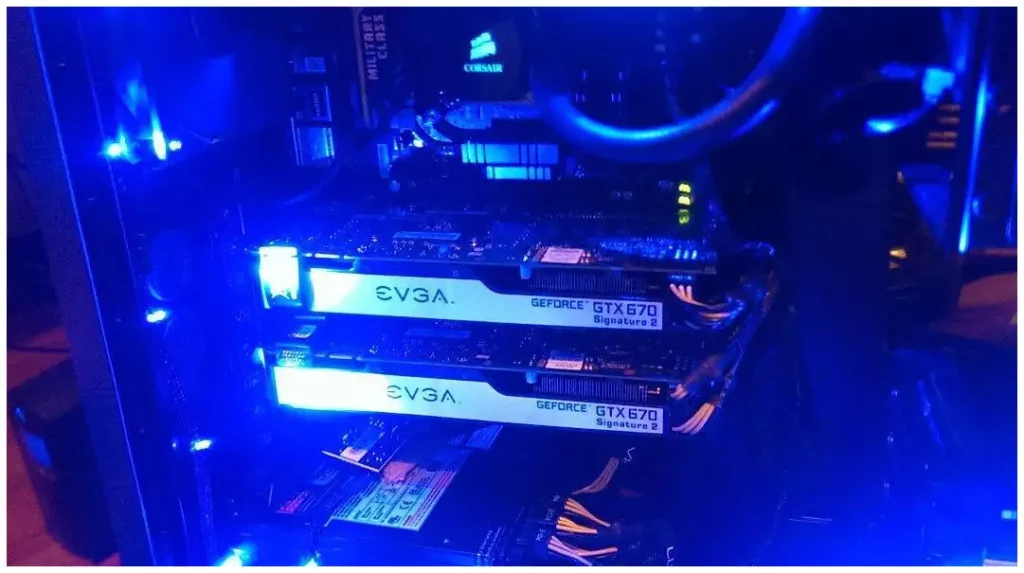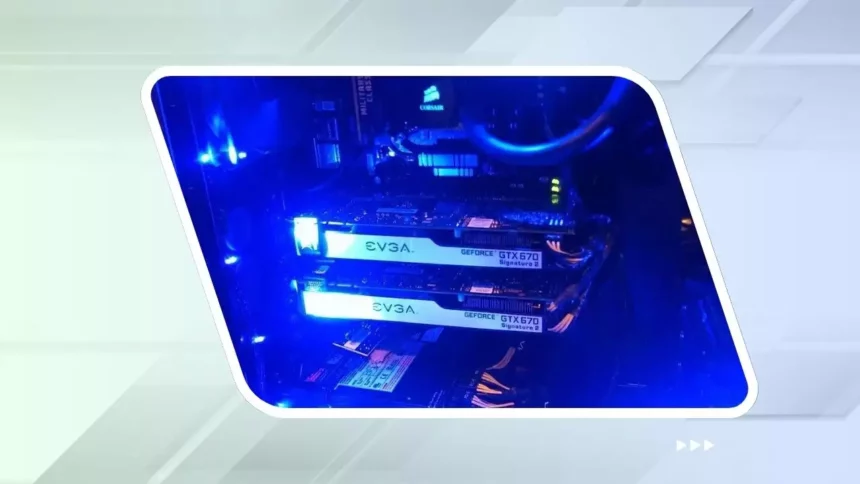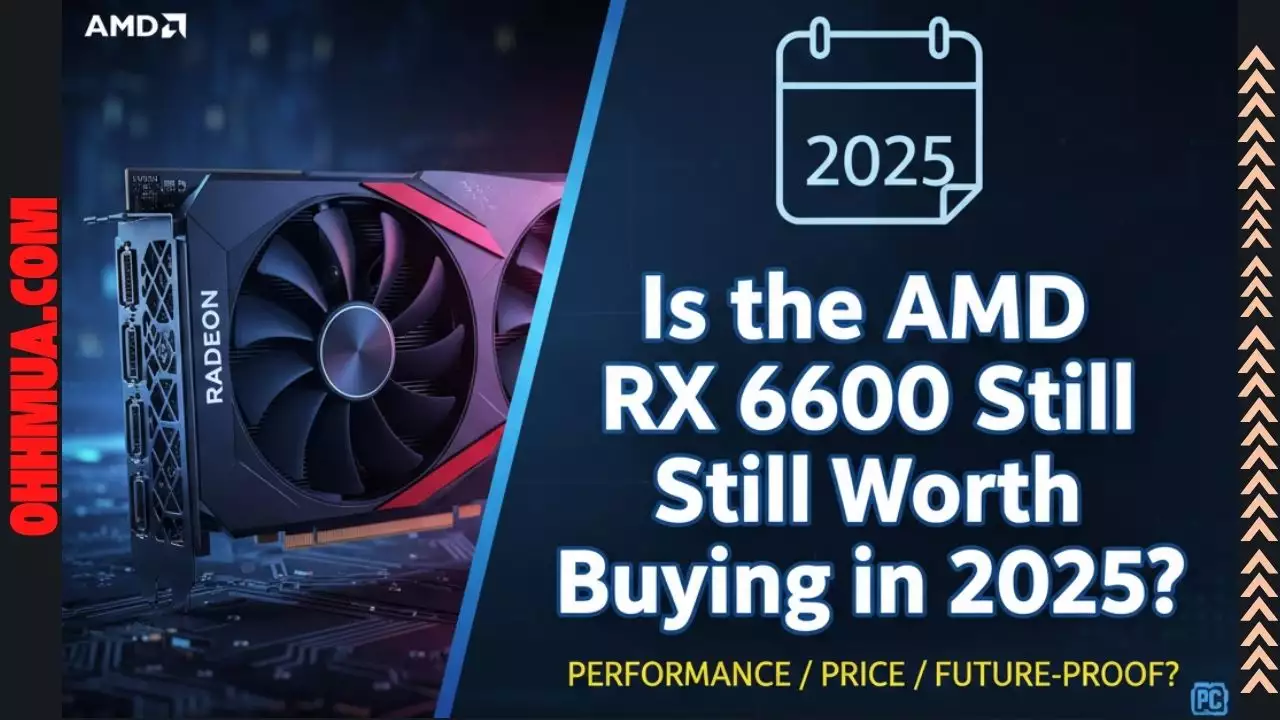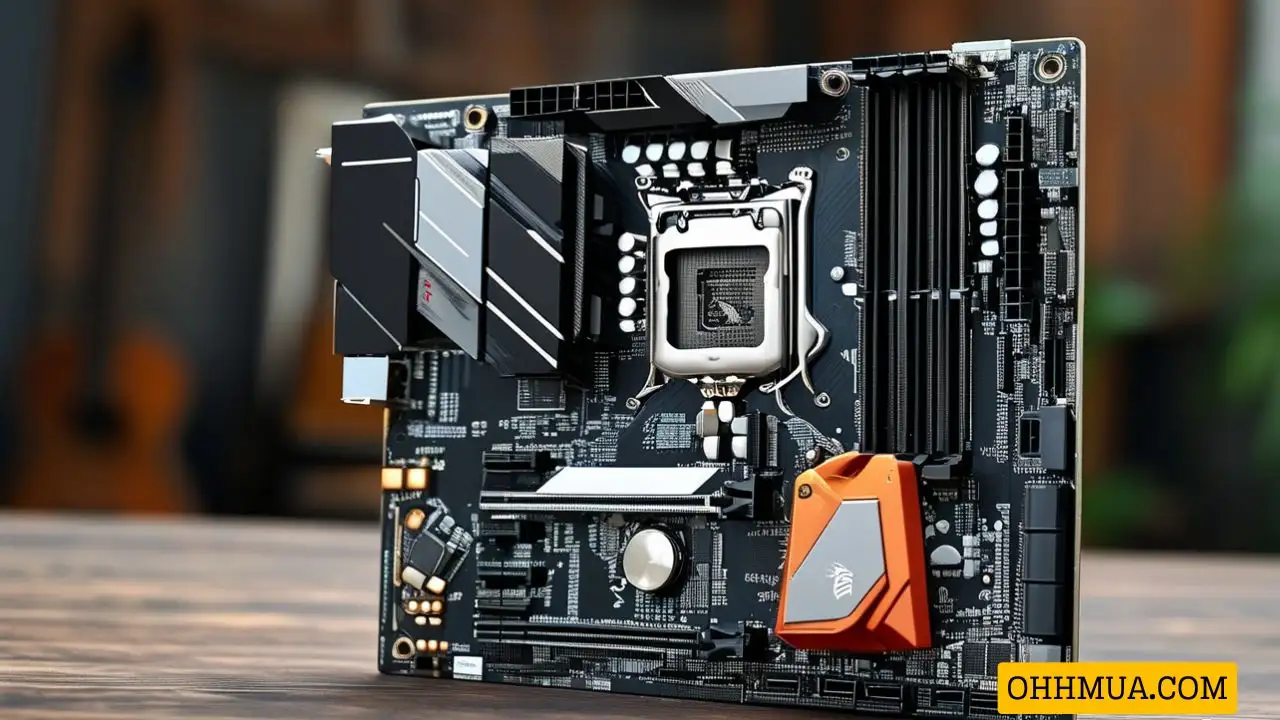In the fast-evolving world of PC gaming, hardware that was cutting-edge a decade ago can quickly become obsolete. Today, we’re diving into a 2013 gaming PC build to determine if it can still handle the demands of gaming in 2025. This build, put together with care and dedication, holds sentimental value for its creator, who built it at age 15 in memory of their late father. But sentiment aside, let’s see how its components stack up against modern gaming requirements.
Below is the full list of components we’re evaluating:
- CPU: Intel Core i7-3770K 3.5 GHz Quad-Core
- CPU Cooler: Corsair H100i 77 CFM Liquid CPU Cooler
- Motherboard: MSI Z77 MPOWER ATX LGA1155
- GPU: EVGA GeForce GTX 670 2GB (x2 in SLI)
- RAM: Kingston 8GB 1600MHz DDR3 CL9 DIMM Beast XMP (2x4GB)
- Storage: 2TB Seagate Barracuda HDD
- Power Supply: ULTRA X4 1050W Modular V2
- Case: Corsair Graphite Series 600T ATX Mid Tower
- Operating System: Microsoft Windows 7 Home Premium SP1 OEM 64-bit
- Monitor: BenQ XL2420TX 24″ 1920×1080 120Hz
- Keyboard: Corsair Vengeance K90 Wired Gaming Keyboard
- Mouse: Razer Mamba 2012 Elite Wireless Laser Mouse
- Headphones: Razer Tiamat Elite 7.1
Let’s break down each component and assess its suitability for gaming in 2025, based on current industry standards and trends.
CPU: Intel Core i7-3770K
The Intel Core i7-3770K, released in 2012, was a flagship processor with four cores and eight threads, clocked at 3.5 GHz with a turbo boost to 3.9 GHz. It was a favorite for overclockers, as evidenced by the user’s mention of pushing it to 4.4 GHz. However, by 2025, gaming has shifted toward CPUs with higher core counts and newer architectures.
Modern games, especially AAA titles, often require at least 6-core CPUs to handle complex AI, physics, and multitasking. Benchmarks from 2023 already showed the i7-3770K struggling with newer games when paired with mid-range GPUs like the GTX 1660 Super UserBenchmark. By 2025, with games optimized for processors like Intel’s Core i5-13600K or AMD’s Ryzen 5 7600X, the i7-3770K is likely to bottleneck performance, resulting in lower frame rates and stuttering in demanding titles.
Verdict: The i7-3770K is outdated for 2025 gaming and would need to be replaced with a modern 6-core or 8-core CPU.
GPU: EVGA GeForce GTX 670 (x2 in SLI)
The EVGA GeForce GTX 670, based on NVIDIA’s Kepler architecture, was a high-end GPU in 2012, boasting 1344 CUDA cores and 2GB of GDDR5 VRAM. The user’s setup includes two of these cards in SLI, which was a powerful configuration for its time. However, by 2025, this setup is severely limited.

Each GTX 670 has only 2GB of VRAM, which is insufficient for modern games that often require 4GB or more, especially at 1080p or higher resolutions. Moreover, NVIDIA has largely phased out SLI support in newer games and drivers, meaning the second GPU may not even be utilized in many titles TechPowerUp. Even in SLI, the combined performance is roughly equivalent to a single GTX 780 or Titan from 2013, which pales in comparison to 2025’s GPUs like the NVIDIA RTX 4070 or AMD RX 7600. These modern cards also support ray tracing and DLSS, features absent in the GTX 670.
Verdict: The dual GTX 670 setup is not viable for 2025 gaming due to low VRAM, lack of SLI support, and missing modern features. A single modern GPU is necessary.
RAM: Kingston 8GB DDR3
The 8GB of DDR3 RAM (2x4GB) at 1600MHz was standard for gaming in 2013 but falls short in 2025. Modern games recommend at least 16GB of RAM, with 32GB becoming the norm for high-end builds and multitasking scenarios like streaming PC Gamer. DDR3 is also significantly slower than DDR4 or DDR5, which offer higher bandwidth and efficiency.
Verdict: 8GB DDR3 is insufficient for 2025 gaming. Upgrading to 16GB or 32GB of DDR4 or DDR5 is recommended.
Storage: 2TB Seagate Barracuda HDD
The 2TB Seagate Barracuda HDD provides ample storage but lacks the speed required for modern gaming. In 2025, SSDs—particularly NVMe SSDs—are the standard for gaming PCs due to their significantly faster load times and data transfer rates Flying Phoenix PCs. An HDD will result in long loading screens and slower system performance.
Verdict: The HDD should be supplemented or replaced with an NVMe SSD for gaming in 2025.
Motherboard: MSI Z77 MPOWER
The MSI Z77 MPOWER motherboard, designed for the LGA1155 socket, is compatible with the i7-3770K but cannot support newer CPUs. It also lacks support for modern features like PCIe 4.0 or 5.0, which are crucial for the latest GPUs and storage devices. Upgrading the CPU would require a new motherboard with a modern chipset, such as Intel’s Z790 or AMD’s B650.
Verdict: The motherboard is a bottleneck for upgrades and needs replacement for 2025 gaming.
Power Supply: ULTRA X4 1050W
The 1050W power supply is more than sufficient for the 2013 build and could potentially support modern components. However, its efficiency and reliability after over a decade of use are concerns. Modern PSUs are more efficient (80+ Gold or Platinum) and quieter, but this unit could still work if in good condition.
Verdict: The PSU is likely functional but may not be as efficient as modern units. Verify its condition before reusing.
CPU Cooler: Corsair H100i
The Corsair H100i liquid cooler was top-tier in 2013 and may still be effective for cooling modern CPUs, especially if maintained well. However, newer coolers offer better performance, quieter operation, and improved aesthetics.
Verdict: The cooler is likely adequate but could be upgraded for better efficiency and noise levels.
Case: Corsair Graphite Series 600T
The Corsair Graphite Series 600T is a spacious ATX mid-tower case that remains compatible with modern components. While it may lack some newer features like optimized airflow or front-panel USB-C, it’s still a viable option.
Verdict: The case can be reused, though newer cases offer improved features.
Operating System: Windows 7
Windows 7 is no longer supported by Microsoft, and many modern games require Windows 10 or 11 to run. This is a critical upgrade for compatibility with 2025’s software ecosystem.
Verdict: Upgrading to Windows 10 or 11 is essential for gaming in 2025.
Peripherals: Monitor, Keyboard, Mouse, Headphones
The BenQ XL2420TX monitor (1080p, 120Hz) is decent for casual gaming but falls short of 2025’s standards, where 144Hz or 240Hz monitors at 1440p or 4K are common for competitive and immersive gaming. The Corsair Vengeance K90 keyboard, Razer Mamba 2012 Elite mouse, and Razer Tiamat Elite 7.1 headphones are functional but lack the advanced features (e.g., customizable RGB, higher polling rates) of modern peripherals.
Verdict: The peripherals are usable but outdated. Upgrading to higher refresh rate monitors and modern input devices would enhance the gaming experience.
Performance Comparison
To illustrate the performance gap, here’s a table comparing the 2013 build’s key components to recommended specs for 2025 gaming:
| Component | 2013 Build | 2025 Recommended |
|---|---|---|
| CPU | Intel Core i7-3770K (4C/8T) | Intel Core i5-13600K or AMD Ryzen 5 7600X (6C/12T or higher) |
| GPU | 2x GeForce GTX 670 (2GB VRAM) | NVIDIA RTX 4060 or AMD RX 7600 (8GB+ VRAM) |
| RAM | 8GB DDR3 (1600MHz) | 16GB or 32GB DDR4/DDR5 (3200MHz+) |
| Storage | 2TB HDD | 1TB NVMe SSD |
| Motherboard | MSI Z77 MPOWER (LGA1155) | Z790 (Intel) or B650 (AMD) |
| OS | Windows 7 | Windows 10 or 11 |
Sentimental Value and Context
The user shared that this PC was built in 2013 at age 15, dedicated to their father who passed away in 2009. This emotional connection makes the build special, but it doesn’t change the fact that the hardware is outdated for modern gaming. The user also mentioned overclocking the CPU to 4.4 GHz and using two GTX 670s, indicating a high-performance setup for its time. However, even with these tweaks, the system cannot meet 2025’s gaming demands.
Conclusion
This 2013 gaming PC, while a testament to the builder’s passion and skill, is not suitable for gaming in 2025. The CPU, GPUs, RAM, storage, motherboard, and operating system are all outdated and incapable of running modern games efficiently. To enjoy 2025’s AAA titles or competitive games, significant upgrades are necessary, including a new CPU, GPU, RAM, SSD, motherboard, and OS. The case and possibly the PSU could be reused, and the peripherals are functional but could benefit from upgrades for a better experience.
For those looking to preserve the sentimental value of this build, consider keeping it as a secondary system for retro gaming or light tasks, while investing in a new PC for modern gaming. The memories tied to this build are priceless, but for cutting-edge gaming in 2025, it’s time to move forward with new hardware.

Hi, I’m Nghia Vo: a computer hardware graduate, passionate PC hardware blogger, and entrepreneur with extensive hands-on experience building and upgrading computers for gaming, productivity, and business operations.
As the founder of Vonebuy.com, a verified ecommerce store under Vietnam’s Ministry of Industry and Trade, I combine my technical knowledge with real-world business applications to help users make confident decisions.
I specialize in no-nonsense guides on RAM overclocking, motherboard compatibility, SSD upgrades, and honest product reviews sharing everything I’ve tested and implemented for my customers and readers.


![Comprehensive Computer Beep Codes [Help You Fix Errors]](https://ohhmua.com/wp-content/uploads/2020/08/Comprehensive-Computer-Beep-Codes-Help-You-Fix-Errors.webp)




